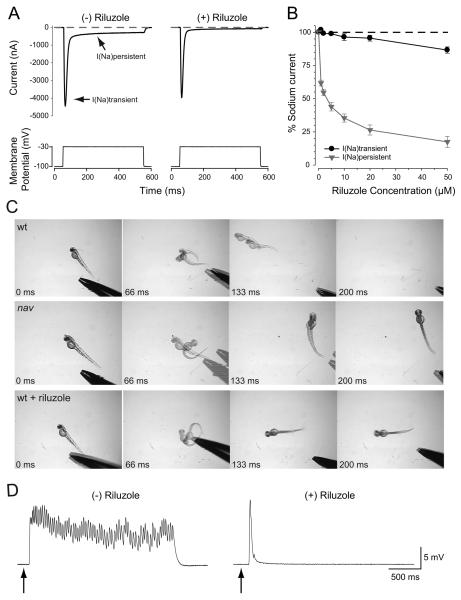Fig. 7.
Riluzole preferentially blocks NaV1.6a persistent current, and phenocopies the nav mutant response to touch in wild type embryos. (A) Two electrode voltage clamp recordings from oocytes co-expressing NaV1.6a and β1 in the absence or presence of Riluzole (50 μM) demonstrating selective blockade of the persistent sodium current. (B) Concentration-response relationship of Riluzole effect on persistent and transient sodium currents. Values represent the average ± SEM (n = 10). Riluzole (10 μM) mimics the nav behavioral response to touch (C), and the abbreviated pattern of touch-evoked synaptic drive to nav axial skeletal muscle in wild type embryos (48 hpf) (D).

